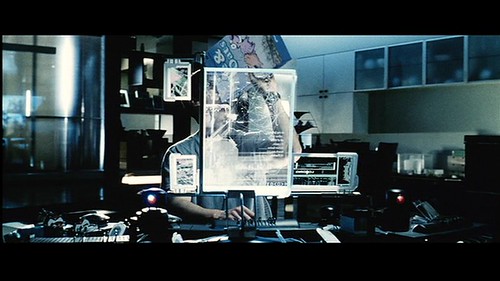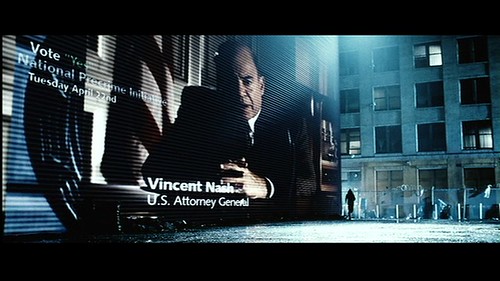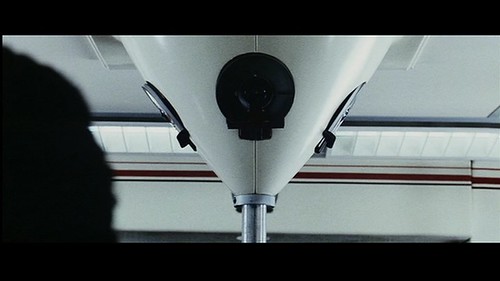It amazes me how non-relevant this topic is, particularly nowadays when there can be little reason to entice a consumer to engage in letting loose of whatever cash they may have. By the time we get out of the current morass of mistrust, misspending and misguided expectations of a world where all the growth graphs go up and to the right, we should be happy to have a pair of trousers that fit and a spigot with potable water running out of it.
But, the topic of pervasive advertising goes further than that. What could the outcome of a workshop be other than..a world of pervasive advertising. I mean, working out the details is all good, but what about a workshop on a world without advertising? Could that even be possible to have without essentially saying you’re going to quit your job as an engineer/scientist of pervasive stuff?
It just turns out that the vision of a near future of pervasively advertised-to humans just comes out all wrong. It’s only ever annoying and bothersome, or a horrid expression of human-database symbiosis.
There’s really not much more of an end game for pervasive advertising than that of the extrapolation of today’s conditions as in the remarkable design fiction of Spielberg’s visual rendering of P.K. Dick’s “Minority Report”. The assemblage of participants in the world of advertising is optimized for itself, which is well-greased linkages between me, my “interests” (to the extent these translate into commerce) and those who have something to gain in economic terms from selling me my interests. It’s optimized to leverage the pervasively networked, databased world and this can only lead to an intensely uninspired, technically awesome, intrusive and annoying world. It can’t really go any other way than that shown in the various compelling and fascistic interpretations in “Minority Report” of the pervasive advertising future – retinal scanning, holographic “pop-up” adverts, yammering cereal boxes with laminated displays and gesture recognition (to know when I’m trying to tell it to stop yammering, which is guaranteed to fail any number of times, as adroitly shown in Spielberg’s film), fascistic large urban screens, etc.
Yet, this workshop sounds pleasantly inviting. I don’t, though, see how the conditions of possibility for a world of pervasive advertising would lead to anything but the nuisance we experience today, times a billion. Who knows. Maybe today’s economic blight will wipe advertising as we know it off the face of the map for something else. What that is, i have no idea but so long as we think of advertising as a “sure thing” along with death and taxes, it’ll be nothing more than what it is today, except with a few network links and even bigger screens. We’ll still have “pop-ups” only they’ll stand in front of us when we try to get from here to there. We’ll still have messages on otherwise blank walls reminding us to give feedback on that Torx wrench we just bought from Callium Carbide Tools of Peoria last week. I mean..sounds wretched.
$100 for the first person who can come up with a compelling imaginary of a world without advertising, and one that renders viable and with a buzzing economy.
CALL FOR PAPERS
1st Workshop on Pervasive Advertising
In conjunction with Pervasive 2009
May 11, 2009 – Nara, Japanhttp://pervasiveadvertising.org
Submission Deadline: February 10, 2009
“The only sure things in life are death, taxes and advertising. Although
pervasive technologies cannot avoid death or lessen the pain from
taxation, advertising is fertile ground for research on pervasive
technologies.”[[What ninny said this?? What? Did Moses take out a 2 minute spot during the parting of the Red Sea? If this is the principle of pervasive advertising, fatwa on all pervasive advertising workshops! If advertising really is a necessary evil, like death and taxes, lets get to work on making it an obsolete evil thing that has been eradicated, like the Pox and Foot and Mouth disease; get rid of it already. Or get onto something different and inspired and more in keeping with the times. Stop twiddling about with technologized versions of the same old crap. Seriously.]]
======================================================================
Electronic displays have become ubiquitous and replace traditional
posters and billboards. Hence they not only provide a way of showing
dynamically updated content, but also means to react implicitly and
explicitly to the audience in their vicinity. In order to interact with
the target audience, technologies need to be explored capable of
identifying the user or his interests / needs.[[Well, this is speculative. I see plenty of peeling wheat-paste-ups all over the place. but, okay. Let’s assume that J.C. Decaux is well-positioned to introduce digital displays ubiquitously. Do I want to know that they’re linked to a database of me? Who is J.C. Decaux anyway? Can I tell him to leave my database alone?]]
The current generation of mobile phones come with high speed Internet
access and built-in location sensing. Those properties make mobile
phones a powerful mediator between the advertiser / advertising platform
and the customer.[[Good God. That’s just wrong. I mean, who wants an ad to pop up on their phone?? I have enough trouble when I get an SMS. Seriously. Who is it? Am I missing something here?]]
Social networks such as Facebook, MySpace or LinkedIn are rapidly
growing. Such platforms include detailed information not only on the
interests of users (based for example on profiles and histories) but
also on their network. This information is placed on the Internet and
shared with friends or even the public.[[Yeah, but under my own terms. Or should be. Can I opt out of pervasive advertising networks?]]
These technological advances, and others, change the opportunities and
challenges for advertising radically.[[Not really. It’s the same crap, only with a network and a database and real-time data links. Really. Don’t fool yourself to think that something innovative is going on here. It’s just optimization of an existing schema for knots and linkages between my wallet, my sensibilities and some company some where.]]
Consequently, advertising is becoming one of the major drivers of
pervasive computing technology for many end-users (e.g. mobile ads,
digital signs, context awareness, RFID). Yet we believe that the
attention this topic received in the pervasive computing community does
not equal its immediate impact on society.Taking a positive view we can envision advertisements that precisely
match a person’s interests and fit the current situation so well that
people enjoy receiving them and see advertising as a pleasant
distraction. On the contrary taking a negative view one could imagine a
world where people cannot escape from advertisement, where we are
continuously tracked and where advertisements reduce the quality of
life. Both views even though very extreme are worthy of further
discussion. Hence we hope to provide a venue for this discussion by
offering this workshop.[[I’ll be looking for the workshop write-up. I’m dubious. No one in my mind has come up with anything other than that which will lead to the “Minority Report” imaginary. Seriously. As pleasant as it is shown in the PowerPoint, it’s always enormous screens beaming down to me Coca-Cola ads or encouraging me to buy a watch only someone like Sir Edmund Hillary would wear..you know, those big, multi-face “chronometers” that look like an exercise weight.]]
PAPER SUBMISSION AND PARTICIPATION
We ask potential attendees to submit 2-4 page papers describing their
research interest and particular focus on the workshop topic. The paper
may include the description of ongoing research, results found,
experience gathered, new ideas, future projects or questions on topics
related to pervasive computing and advertising. Each participant is
asked to provide a short paragraph (up to 200 words) on their vision of
advertising in 25 years from now. All submissions will be peer-reviewed.More information can be found at
http://pervasiveadvertising.orgAll submissions must be sent electronically to joerg.mueller@uni-muenster.de
The format for submissions is Springer LNCS, the same as that of
Pervasive 09.
Templates can be found at
http://www.springer.com/computer/lncs?SGWID=0-164-7-72376-0Papers should be no longer than 4 pages. All papers must be submitted in
PDF. At least one author for each accepted paper is expected to attend
the workshop.Non-archival working notes will be produced containing the papers
presented at the workshop. Selected papers from the workshop may be
considered for expansion and inclusion in a special issue of a journal.IMPORTANT DATES
* February 10, 2009: Deadline for electronic submission
* March 1, 2009: Author Notification
* May 1, 2009: Submission of camera-ready
* May 11, 2009: Pervasive Advertising Workshop at Pervasive 2009WORKSHOP ORGANIZERS
Jörg Müller, University of Münster
E-mail: joerg.mueller@uni-muenster.deAlbrecht Schmidt, University of Duisburg-Essen
E-mail: albrecht.schmidt@acm.orgBo Begole, PARC
E-mail: bo@parc.comAaron Quigley, University College Dublin
E-mail: aquigley@ucd.ie
Why do I blog this? I dunno. This stuff kinda bugs me, if you can’t tell. It’s pretty clear that the angle is to create something that has commercial viability, rather than thinking things through for an alternative near future of connecting people, interests, ideas and so forth. On the one hand, it’s exciting and futuristic stuff. On the other hand, it’s not a future that I think has particularly exciting prospects in the category of “habitable”, fun, non-invasive, non-bothersome, non-pop-up-in-your-face futures. And, the advertising thing. I’m serious. If someone can’t paint a picture of a world without advertising..I’m listening. And I got your $100 here.





A brilliant post. I’m heartened by the thinking in it.
A world without advertising needs to put the product or service right by your side when it’s needed.
Stage trapdoors and use of gravity to force trial?
Just a thought 😉
My profession is, itself, an alternative to advertising – outside sales. However, many find it to be as much or more of a nuisance than ads. Ironically, I sell advertising.